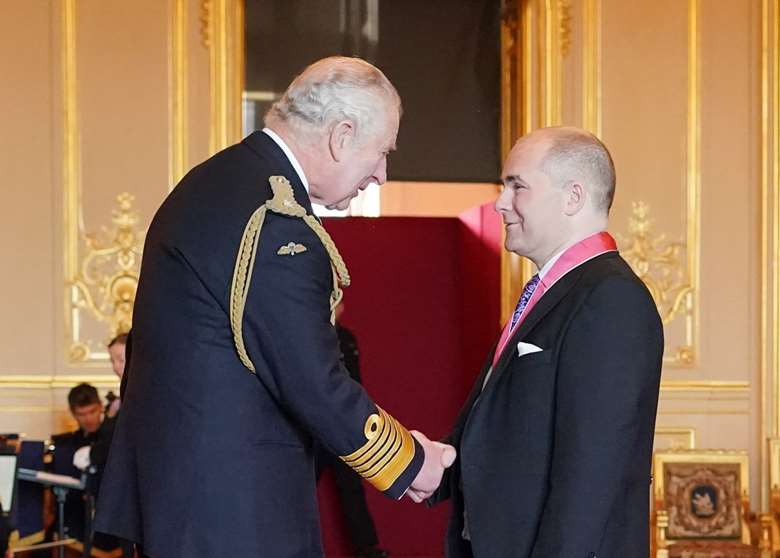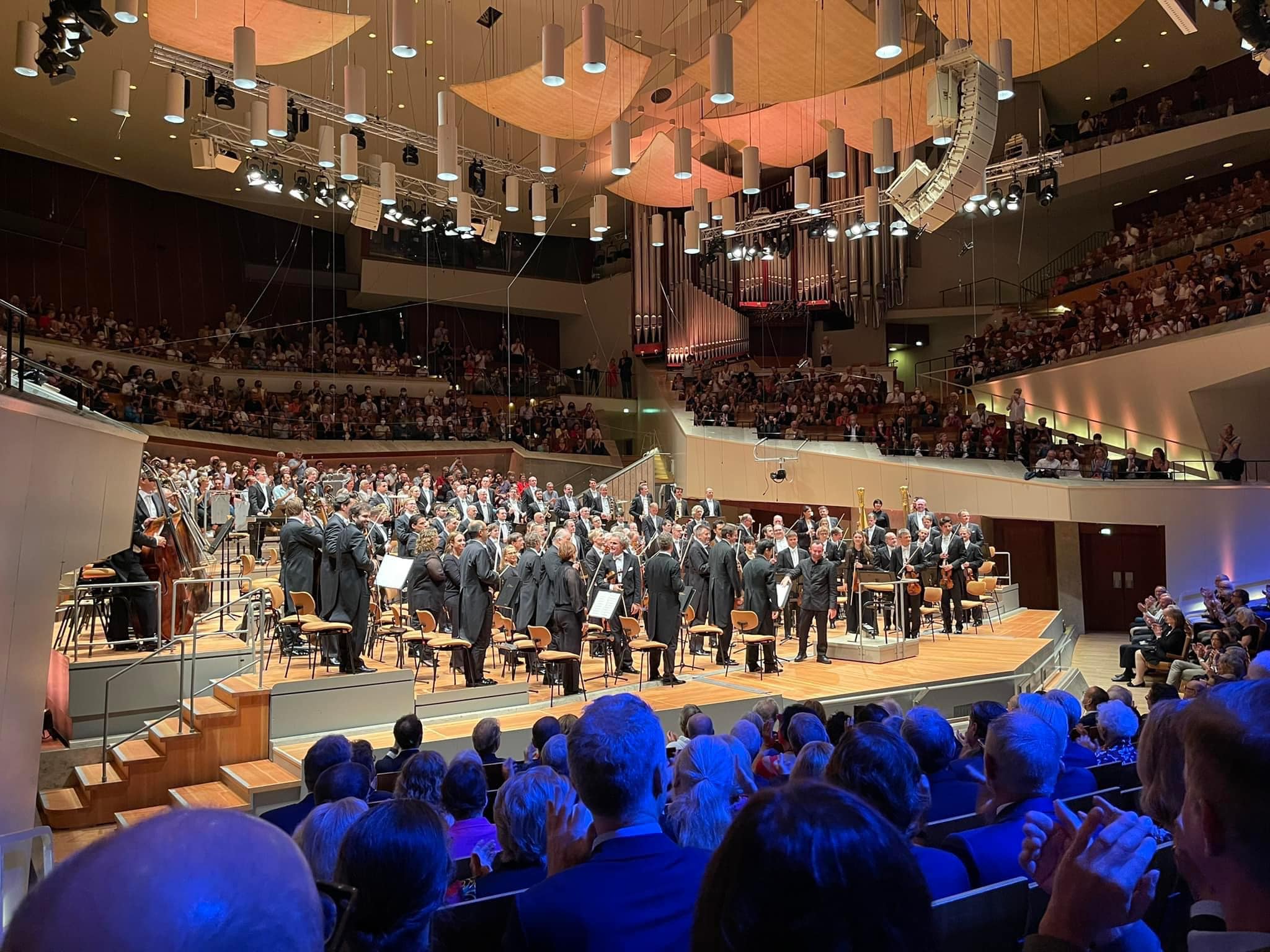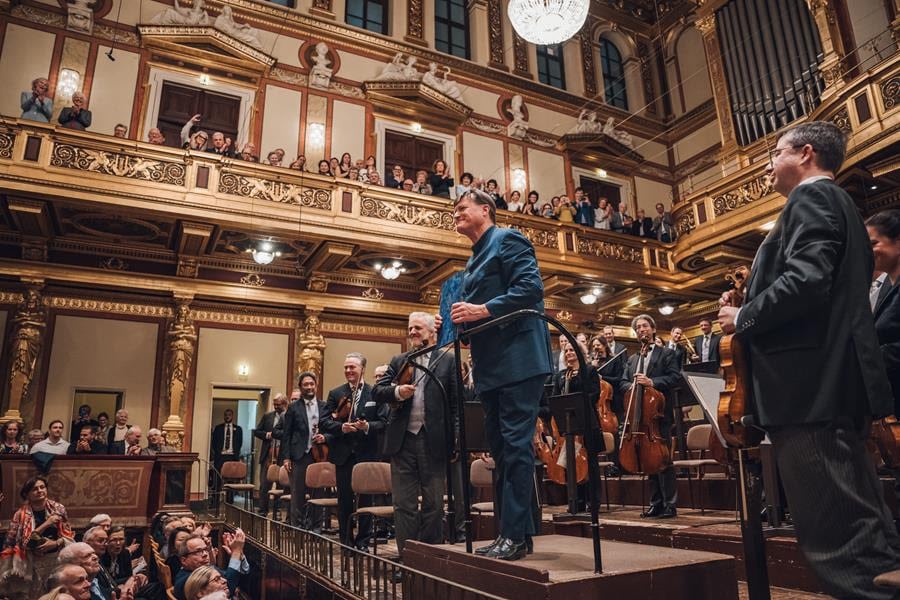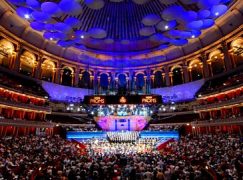King Charles commissions 12 Coronation anthems
NewsBuckingham Palace today released details of more new music to be played at the Coronation.
The musical menu includes:
– a short overture composed by Judith Weir, Master of The King’s Music, ‘Brighter Visions Shine Afar’;
– a solo by Royal Harpist Alis Huws in Sir Karl Jenkins’ ‘Tros y Garreg (Crossing the Stone)’;
– ‘Sacred Fire’ by film composer Sarah Class;
– the hymn ‘Be Thou my Vision – Triptych for Orchestra’ by three composers, Nigel Hess, Roderick Williams and Shirley J Thompson;
– Iain Farrington’s organ commission, ‘Voices of the World’;
– ‘King Charles III Coronation March’ by film composer Patrick Doyle;
– Fanfares for trumpeters by Christopher Robinson;
– Paul Mealor’s ‘Coronation Kyrie’ sung in Welsh by Sir Bryn Terfel;
– ‘Alleluia (O Clap your Hands)’ and ‘Alleluia (O Sing Praises)’ by TV and film composer Debbie Wiseman;
– ‘Make a Joyful Noise’ a Coronation Anthem, Andrew Lloyd Webber;
– ‘Coronation Sanctus’ by Roxanna Panufnik;
and Agnus Dei by Tarik O’Regan.
More details here.






It’s excellent news to see that HM The King is commissioning so much new music for the Coronation. I look forward to hearing and seeing it performed.
Oh,please.
As the Prince of Wales, Charles was a great fan of the guru
Laurens van der Post, who had nothing to do with the Christian Faith.
“Whatever love means” said Charles when marrying Diana in a stately Christian ceremony. “Whatever faith means” is his position now. Fits the Church of England very well, in practice?
“The Defender of the Faith” was – and “The Defender of faiths and wokeness” is – silent, when Christians are arrested for preaching the Bible in the UK (Pastor John Sherwood, 71, London), under stately Pride-ideology. No matter, this world shall pass. 2. TIMOTHY 3: “12 Yea, and all that will live godly in Christ Jesus shall suffer persecution.”
I forget that people still complain about wokeness, LMAO! Thanks for the chuckle, homophobe.
Zu viele Noten.
William Walton’s coronation marches are going to be pretty hard to beat.
Nothing by Sir Paul McCartney?
At the last coronation, with the UK deep in austerity, a new national recipe was promoted – for coronation chicken.
This time round, we again have deep austerity but also avian flu, so for safety reasons we need a new coronation food.
When we are agreed on a suitable food for our new King and Queen-Concubine, perhaps one of the twelve composers might set the new recipe to music?
Wherefore doth thee speak of coronation chicken and avian flu at which hour we has’t a human coronation und’r the beshrew of the corona(tion) virus?
Ask and ye shall receive: https://www.theguardian.com/uk-news/2023/apr/17/king-charles-camilla-coronation-quiche-signature-dish?CMP=Share_iOSApp_Other
If I were King I would have commissioned John Williams who is arguably the best living composer of brass fanfares worldwide.
Sigh…
OK, Patrick Doyle is not bad – hope he really let’s rip on this occasion.
The single most performed fanfare by a living classical composer is John Adams, “A Short Ride in a Fast Machine”, originally known as “The Great Woods Festival Fanfare”. The number of performances of that work dwarfs any other including Williams, Glass, Ades, etc. etc.
But you’re not or ever will be the King of England! The King has chosen well.
Maybe in my next life, and then I’ll hire you as court jester.
Diversity is very bad taste Maria. It must be Tallis, John Blow, Purcell, Handel. Andrew Lloyd Webber is kitsch.
The only American composer commissioned to compose music for the Coronation festivities is Peter Boyer.
Who may be regarded a second rate film music arranger.
At least in this function he should be familiar with the effects of pomp and circumstance.
Here’s the link for further information (currently omitted from the post)
https://www.royal.uk/coronation-music-commissions
Looks good.
your ‘More details here’ is missing a hyperlink, chief.
ALW ugh Kitsch.
My own Coronation anthem, set to the harp mode of Turlough O’Carolan
What is man, that thou art mindful of him: and the son of man, that thou visitest him? Thou madest him lower than the angels: to crown him with glory and worship. Be not forgetful to entertain strangers: for thereby some have entertained angels unawares. O Lord our Governor: how excellent is thy Name in all the world!
Be thou my vision is contained in the Irish Church Hymnal. The hymn text is set to the tune “Slane”.
Slane,” is originally an Irish folk tune that was created to honour St. Patrick. Back in 433 AD, on the eve of Bealtine, a Druidic holiday that lines up directly with Easter as well as the spring equinox, it was declared by the King, Laoghaire (Leary) Mac Neill, that no fires were to be lit until the fire atop of Tara Hill was lit. Going against the kings wishes, St. Patrick went out to Slane Hill and lit a candle to celebrate the resurrection of Christ. The king was so impressed by the courage that St. Patrick had shown, Laoghaire let him continue his missionary work throughout Ireland.
It wasn’t until more than 100 years had passed that anyone took an interest in writing words to commemorate what had happened that day. Considered to be one of the top poets in Ireland at the time, Dallan Forgaill (CA 530-598 AD), who was said to have spent so much time studying that he went blind, took it upon himself to write a poem about the events.
The poem was entitled “Rop tu mo Baile,” and was written in old Irish. It wasn’t until the year 1905 that Mary E. Byrne translated the text into English Prose. After the translation, another writer by the name of Eleanor H. Hull took the translation and put it into verse in her 1913 publication of Poem Book of Gael.
The Tune “Slane,” was not published until 1909 in a book
entitled, Old Irish Folk Music and Songs, written by Patrick W. Joyce. The tune was not published under the name “Slane,” originally, but was rather named “By the Banks of the Bann.” It wasn’t until 1919 that Eleanor H. Hull’s translation of the text was paired with the tune by Leopold Dix. The tune was first published in the Irish Church Hymnal, although many different versions of the hymn exist.
I would prefer it, if Messrs Hess, Williams & Thompson would not desecrate it in some modern triptych guise. It is best played on a wire strung harp, c 1700
Money to burn
Any proper record label recording and publishing this?
I would doubt it.
Since when did the British Royal family take any interest in classical music. Their taste generally is either “Pop” or kitsch.
They would not know Bach from Buxtehude. Elizabeth I at least spoke latin, played the virginals and liked Byrd & Tallis, but then she had taste unlike the Saxe-Coburg pretenders in 2023.
Played the what !?
Doc Martin is correct 100% about the origin of “Slane”. Another tune which should be included is Air Bharr na gCnoc ‘san Ime gCéin.
Mo Ghile Mear (translated “My Gallant Darling”, “My Spirited Lad” and variants) is an Irish song. The modern form of the song was composed in the early 1970s by Dónal Ó Liatháin (1934–2008), using a traditional air collected in Cúil Aodha, County Cork, and lyrics selected from Irish-language poems by Seán “Clárach” Mac Domhnaill (1691–1754).
The lyrics are partially based on Bímse Buan ar Buairt Gach Ló (“My Heart is Sore with Sorrow Deep”, c. 1746), a lament of the failure of the Jacobite rising of 1745. The original poem is in the voice of the personification of Ireland, Éire, lamenting the exile of Bonnie Prince Charlie. Mo ghile mear is a term applied to the Pretender in numerous Jacobite songs of the period. O’Daly (1866) reports that many of the Irish Jacobite songs were set to the tune The White Cockade. This is in origin a love song of the 17th century, the “White Cockade” (cnotadh bán) being an ornament of ribbons worn by young women, but the term was re-interpreted to mean a military cockade in the Jacobite context.
Another part of the lyrics is based in an earlier Jacobite poem by Mac Domhnaill, Seal do bhíos im mhaighdin shéimh. This was published in Edward Walsh’s Irish Popular Songs (Dublin, 1847) under the title of “Air Bharr na gCnoc ‘san Ime gCéin — Over the Hills and Far Away”. Walsh notes that this poem was “said to be the first Jacobite effort” by Mac Domhnaill, written during the Jacobite rising of 1715, so that here the exiled hero is the “Old Pretender”, James Francis Edward Stuart.
The composition of the modern song is associated with composer Seán Ó Riada, who established an Irish-language choir in Cúil Aodha, County Cork, in the 1960s. The tune to which it is now set was collected by Ó Riada from an elderly resident of Cúil Aodha called Domhnall Ó Buachalla. Ó Riada died prematurely in 1971, and the song was composed about a year after his death, in c. 1972, with Ó Riada himself now becoming the departed hero lamented in the text.
The point of departure for the song was the tape recording of Domhnall Ó Buachalla singing the tune. Ó Riada’s son Peadar suggested to Dónal Ó Liatháin that he should make a song from this melody.
Ó Liatháin decided to select verses from Mac Domhnaill’s poem and set them to the tune. He chose those that were the most “universal”, so that the modern song is no longer an explicit reference to the Jacobite rising but in its origin a lament for the death of Seán Ó Riada.
Mary Black sings Mo Ghile Mear
https://www.youtube.com/watch?v=qDlCM_Mwtys
Here is Sean O Riada, playing it on a rare 1764 Ferdinand Weber upright harpsichord, owned by the late Garech Browne. It was kept at his residence Luggala in county Wicklow.
I understand Luggala was subsequently bought by a reclusive Italian industrialist.
https://www.youtube.com/watch?v=gvhc4u9oT6I
Ferdinand Weber is said to have been born in Borstendorf, Saxony on 6 May 1715 and to have served his apprenticeship as an organ builder with Hähnel in Meissen.
Nex and Whitehead report primary source evidence that demonstrates Weber was active in London between 1745–1748, his name appearing in the records of the German Lutheran Church of the Savoy as an organ builder in charge of the organ there and as a member of the congregation.
They suggest that his move to Dublin did not occur until ca. 1748–49, when they found clear evidence of his presence in that city from a record of a payment made to him for repairing the organ of Trinity College Chapel, dated 23 June 1749.
From their examination of his surviving Account Book, they report evidence of his activities both as an organ builder and as a keyboard instrument maker, including ten harpsichords, seven pianos and one spinet.
The instrument kept at Garech Browne’s residence Luggala, was built about 1764. It is a rare example of an upright harpsichord.
Weber was based at 71, Marlborough-street, Dublin in the parish of St Thomas until his death in 1784. After his death, his widow Rachel carried on the business, with the involvement of their son Thomas. After her death in 1789, Nex and Whitehead report, Thomas gradually relinquished his father’s tuning and maintenance contracts to other organ builders, for example William Hollister.
Locus iste
Anton Bruckner
Die Wiltener Sängerknaben in der Innsbrucker Hofkirche
Dir. Johannes Stecher
Locus iste a Deo factus est,
In aestimabile sacramentum,
Irreprehensibilis est.
This place was made by God,
a priceless sacrament;
it is without reproach.
https://www.youtube.com/watch?v=FrPidPEPmYQ